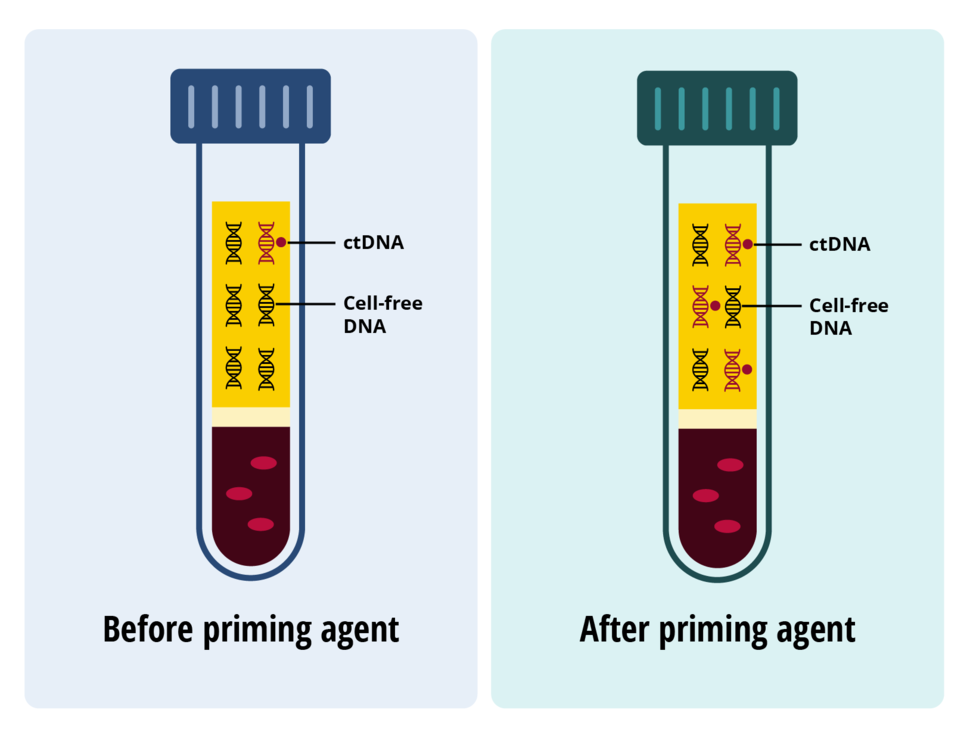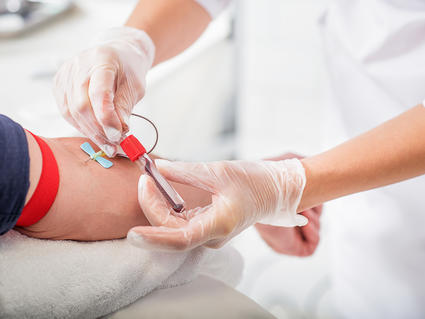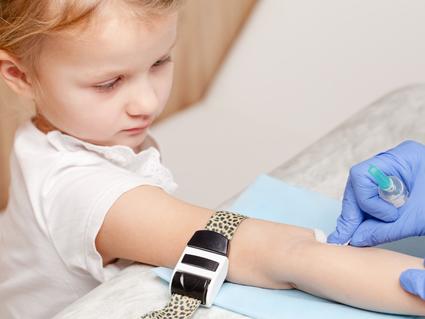Pump Up the Volume: “Priming Agents” May Improve Cancer Liquid Biopsies
, by Carmen Phillips
Tests that can detect signs of cancer or cancer-related genetic changes in a blood sample, known as liquid biopsies, have generated immense excitement. Some of these tests are already being integrated into cancer care and others are being studied as a way to screen people for many types of cancer.
But liquid biopsies have yet to emerge as the breakthrough technology many believe they can be, in large part because they don’t always reliably detect cancer. A big reason that these tests fail to detect cancer is that there isn’t enough of the biological material in the blood that many of these tests are designed to find: tiny bits of DNA that have escaped from tumors, known as circulating tumor DNA (ctDNA).
Now, researchers from the Massachusetts Institute of Technology (MIT) and the Broad Institute believe they may have come up with a way to overcome this problem.
Using two different techniques, they were able to substantially, and temporarily, increase the amount of ctDNA in the blood of mice with tumors. With more ctDNA in collected blood draws, a liquid biopsy could better detect cancer, according to findings published January 18 in Science.
An investigator on the study, J. Christopher Love, Ph.D., of MIT’s Koch Institute for Integrative Cancer Research, said the team is excited about the potential of their approach to “enhance the benefits of blood-based cancer diagnostics.”
Maria Arcila, M.D., who directs the Diagnostic Molecular Pathology Laboratory at Memorial Sloan Kettering Cancer Center, agreed. “This study is very exciting in that it addresses one of the major issues with liquid biopsies,” said Dr. Arcila, who was not involved in the study. “This is very early data,” she cautioned, but the potential of these approaches to improve the ability of liquid biopsies to detect cancer “is very encouraging.”
However, there’s still more to work to be done, Dr. Love acknowledged.
Clinical trials are needed, he said, “to understand if this effect can benefit patients using these diagnostics and is safe.”
The challenge of finding ctDNA
Traditional tumor biopsies require surgery or other invasive procedures. And sometimes, depending on a tumor’s location or how sick a person is, a biopsy isn’t possible.
Liquid biopsies have not shown to be more accurate than tumor biopsies. However, in theory, they may be able to provide much of the needed information about a person’s cancer from a single blood draw. And getting a blood sample is safe, inexpensive, and easy to repeat.
Currently, however, liquid biopsies are only being used to help guide the treatment of a handful of cancers, mostly to help oncologists determine whether a patient is a candidate for a specific targeted therapy.
Further integration of liquid biopsies into cancer care—such as for monitoring how tumors are responding to treatment or whether a cancer is coming back after earlier successful treatment—has been hampered by “many unresolved limitations,” Dr. Arcila said. Those include “biologic limitations” that “affect the amount of [ctDNA] you can recover from a liquid biopsy.”
The amount of ctDNA in the blood can be influenced by multiple factors, explained Christos Patriotis, Ph.D., of the Cancer Biomarkers Research Group in NCI’s Division of Cancer Prevention, who was not involved in the study.
Those factors can include where tumors are located in the body, their size, and the composition of blood vessels in and around them, Dr. Patriotis explained.
But particularly with smaller tumors—such as in people with cancer whose tumors have shrunk in response to treatment—there often isn’t much ctDNA released into the circulation.
“It’s a physical biological limitation,” he said.
And when it comes to tests looking for ctDNA in the blood, there’s another problem to overcome: Any amount of DNA from tumors in the circulation will be massively outnumbered by DNA fragments from normal cells, byproducts of the billions of healthy cells in the body that die each day.
Liquid biopsies use different technologies and techniques to specifically tell ctDNA apart from this other cell-free DNA, as it’s often called. But it’s a major technical challenge, one that’s compounded by the huge imbalance between the amounts of the two.
In other words, an old-fashioned needle-in-the-haystack problem.
Macrophages and DNases: Disrupting the garbage collectors
On top of this competing “noise” created by cell-free DNA, liquid biopsies face another hurdle: the body has efficient processes for removing debris, like loose fragments of genetic material, from the bloodstream.
From the moment a bit of DNA escapes from a cell, in fact, it’s often eliminated from the circulation within as little as 30 minutes, Dr. Patriotis explained.
The new study began with the MIT team pondering ways to improve liquid biopsies, which got them thinking about these garbage removal systems, explained another investigator on the study, Viktor Adalsteinsson, Ph.D., director of the Gerstner Center for Cancer Diagnostics at the Broad Institute.
Could they disrupt these systems? Make it harder for the garbage collectors to do their job, they reasoned, and the amount of garbage—including ctDNA—would quickly pile up.
But the disruption would have to be temporary, they realized, just long enough that they wouldn’t be upending an important biological process.
The team decided to target the body’s two primary waste disposal systems.
One relies on cells called macrophages that reside in the periphery of the liver, the body’s chief blood filter. These macrophages (also called Kupffer cells) behave like molecular Roombas, sucking up cellular trash from the blood as it travels through the liver.
The other system relies on enzymes called DNases that roam the bloodstream patrolling for, and rapidly dicing up, any cell-free DNA they encounter.
To carry out their plan, they developed two different treatments, which they called priming agents—one to interfere with macrophages and the other with DNases.
For macrophages, the priming agents were fat-covered nanotechnology particles called liposomes approximately the same size as cell-free DNA and that they knew from other research would travel to the liver. By flooding the circulation with these nanoparticles, the team hoped that macrophages in the liver would be so busy removing these decoys that they would miss a lot of cell-free DNA.
For DNases, they opted to engineer an antibody that would bind to ctDNA in such a way that it would provide a coat of armor to fend off DNase attacks.
Inject a dose of either agent into the recipient, follow it an hour or two later with a blood draw and, they hoped, the haystack would contain a lot more needles for a liquid biopsy to find.
Massive increases in ctDNA after liposome or antibody priming
The researchers began by testing different versions of both types of priming agents in lab experiments. That testing allowed them to refine them and move the best options forward into animal testing.
In both healthy mice and mice with tumors, a single injection of liposomes or the protective antibodies caused huge spikes in cell-free DNA in blood drawn a short time later, they reported. For example, in mice with tumors throughout their body, there was a nearly 60-fold increase in captured ctDNA after giving the liposome priming agent.
And with more captured ctDNA came substantial improvements in a liquid biopsy's ability to detect cancer, known as its sensitivity. The improvement was greatest in mice with the lowest amount of cancer.
In one set of experiments in mice with such a “low tumor burden,” for example, a liquid biopsy couldn’t detect any ctDNA in blood from mice not given a priming agent. But when the same mice were given the liposome, the liquid biopsy found ctDNA in three-quarters of the mice.
As hoped, levels of ctDNA soon returned to where they had been before the priming agents were given, they found. And there was no evidence that either priming agent caused side effects or other unexpected problems in the mice.
Moving the ctDNA priming agents forward
Both priming agents have potential for improving the performance of liquid biopsies, Dr. Patriotis said.
The techniques “are very neat, very smart,” he said. And the agents’ ability to increase ctDNA volume and enhance cancer detection in the mouse experiments are “significant improvements.”
But there are challenges with both liposomes and the protective antibodies, he cautioned.
For example, liposomes given intravenously can cause infusions reactions. And as was the case with some of the COVID vaccines that rely on liposome technology, storage and stability issues would have to be addressed. With the antibodies, there are also biological hurdles, such as getting them to remain in the bloodstream long enough to be sufficiently protective.
There are also important questions about safety, Dr. Arcila said, even given the temporary action of the priming agents. Cell-free DNA “are not transient passengers but play active roles in various processes,” including inflammation, she explained. “Biologically, there are reasons for [their] rapid clearance.”
These issues will “be important to address in future follow-up studies,” she said.
Several members of the research team have started a company to move both approaches forward, including into human testing.
Dr. Adalsteinsson said the researchers are planning to focus their initial efforts on pairing the priming agents with liquid biopsies intended to identify the best treatments for people with cancer and monitoring the extent to which a person’s cancer responds to treatment.
The group is also excited, he noted, about the potential for these approaches to improve liquid biopsies used as screening tests for cancer.


